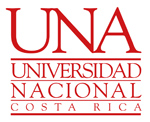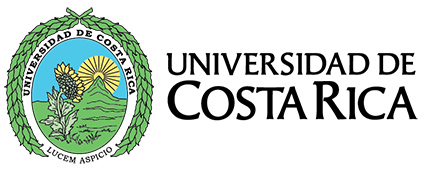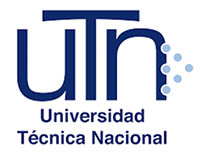GENERAL INFORMATION
Traveling to Costa Rica
Costa Rica is a small country located in the middle of the American continent, showered by two oceans that irrigate its many beaches, but also with green plains, mountains and volcanoes. Its exuberant flora and fauna make it one of the most biodiverse countries of the world. Its territory is divided into seven provinces, four inner zones: San José, Alajuela, Heredia, Cartago, and the remaining three zones located on the coast: Guanacaste, Limón and Puntarenas. The last two have maritime ports on the Atlantic asl well as the Pacific coast.
With just more than fifty thousand square kilometers of extension and five and a half million inhabitants, it is a place full of natural wonders and enchanting places. Its population origin is a like
curios mix of European, indigenous and Afro-descendants. These groups are distributed in 24 territories throughout the country, for a total of 125 thousand people. Costa Ricans are also called “Ticos”, their official language is Spanish and the sport most people are passionate about is soccer.
Costa Rica is very particular in the global area as it has one of the most consolidated democracies on the planet, it has no army since 1948 and its literacy level is over 98%. From the 83 universities in the country, 5 of them are public. In addition, being one of the 25 countries with the greatest biodiversity on the planet, it made conservation its international standard, transforming its natural scenic beauty into a tourist and scientific resource.
Costa Rica’s capital is San José, it is located in the middle of the country, which allows a quick move to any spot to other in its territory by going through a road network. The country also has nine active tourist volcanoes (five of them located on the north of the capital and less than 2 hours away from SJ). The Great Metropolitan Area (formed by the interior provinces centers, and where most of its industry, commerce, finance, and tourism are located), has about half of the beaches and it is just less than 4 hours from the capital.
Also, the country has 27 national parks, 58 wildlife refuges, 32 protected areas, 15 swampy wetland areas, 11 forest reserves and 8 biological reserves as well as 12 other conservation regions that protect diverse natural habitats.
Costa Rica is a beautiful place to enjoy life in peace, away from armed conflicts and in harmony with nature. For these reasons, each year the number of tourists visiting the country increases. For example, the figure exceeded three million annual visitors before the pandemic. Definitely, you should take the opportunity to visit Costa Rica and meet its people.
Looking forward to welcoming you!
Ticos
'Ticos', as Costa Ricans are also known, are famous for being hospitable people, and they like to keep up that reputation. They are polite and hard-working, and they are always willing to share a smile and shake hands.
Ticos know that their land is special, and generally, they gladly accept to guide lost visitors, sometimes even explaining things that may seem strange to a foreigner, trying to make their stay as pleasant as possible. Ticos are said to be this nation's greatest asset, and once you've experienced their friendliness and spontaneity, you will have no doubts about it.
Costa Rica is located in Central America, a territory that is united with North America and South America. It limits to the north with Nicaragua and to the south with Panama. Due to its position, a nice, warm climate predominates; however, many different microclimates can be found throughout the country. According to the projections of the National Institute of Statistics and Census (INEC), Costa Rica has a population of approximately 4,890,379, of whom 2,467,829 are men and 2,422,551 are women.
The country is divided into seven provinces (San José -its capital-, Alajuela, Cartago, Heredia, Puntarenas, Guanacaste, and Limón), 82 cantons, and 484 districts.
The country's marine territory is Cocos Island, a World Natural Heritage Site, located 548 km from Cabo Blanco in the Pacific Ocean with 2,400 hectares of land and 73,100 hectares of sea.
Costa Rica is a democratic, free, and independent Republic.
Capital: San José
Area:51,100 km2 (19,730 mi2)
Official language: Spanish. The second language for a large part of the population is English.
Official religion: Catholic, but there is total freedom of worship.
Official currency: Colon (¢)
Climate
In general, the climate in Costa Rica is very pleasant, both in the dry season, which runs from December to April, and in the rainy season, which runs from May to November. In the latter, rains are usually expected in the afternoons, while the mornings are sunny.
It is a tropical climate with an average temperature of 22º C (72º F) that rises considerably in the coastal areas. Temperature changes are constant and by virtue of the short distances of a small country, they can be experienced, if desired, in a single day. Due to many factors, such as geographical location, climate conditions, formation of mountain ranges, mountains and valleys, this country has different sub climates with various types of vegetation.
Due to the same climatic and topographical characteristics, in Costa Rica, there are different types of forests: cloudy, rainy, dry, and transitional.
The climate is generally rainy, tropical, influenced by winds and sea breeze. To obtain additional information on the weather conditions of Costa Rica, please go to the Meteorological Institute of Costa Rica website: www.imn.ac.cr
Banking and money
Exchange rate: Costa Rica has a managed floating exchange rate regime, controlled by the Central Bank, which is why it is advisable to use the following link for the official reference for the purchase and sale of US dollars.
Local and international banking services are available from state entities and private institutions. Banking hours are from 8:00 AM to 4:00 PM. on a continuous work shift. Evening banking services are often available from 12:00 PM to 6:00 PM.
The most accepted credit cards in stores and tourist sites are Visa, Master Card, American Express, and Diners Club. Some small businesses, especially in rural areas, only accept local currency in cash. The United States dollar is your best option for traveler's checks.
There is a network of ATH (A Toda Hora) ATMs throughout the national territory to dispense money even in US dollars.
To cash your traveler's checks, banks will require your passport. If you want to bring cash, you must bring it in US dollars, but make sure they are in good condition, and it is better to avoid US$100 bills, because most Costa Ricans do not accept them. You will be able to exchange these notes in the banks, though.
Business hours
Stores, in general, open at 9 am and close at 6 pm, while shopping centers are open from 10 am to 9 pm. State banks, for the most part, begin at 9 am and close at 3 pm, while the private ones do so from 9 am to 5 pm. Office hours are generally from 8 am to 5 pm.




















